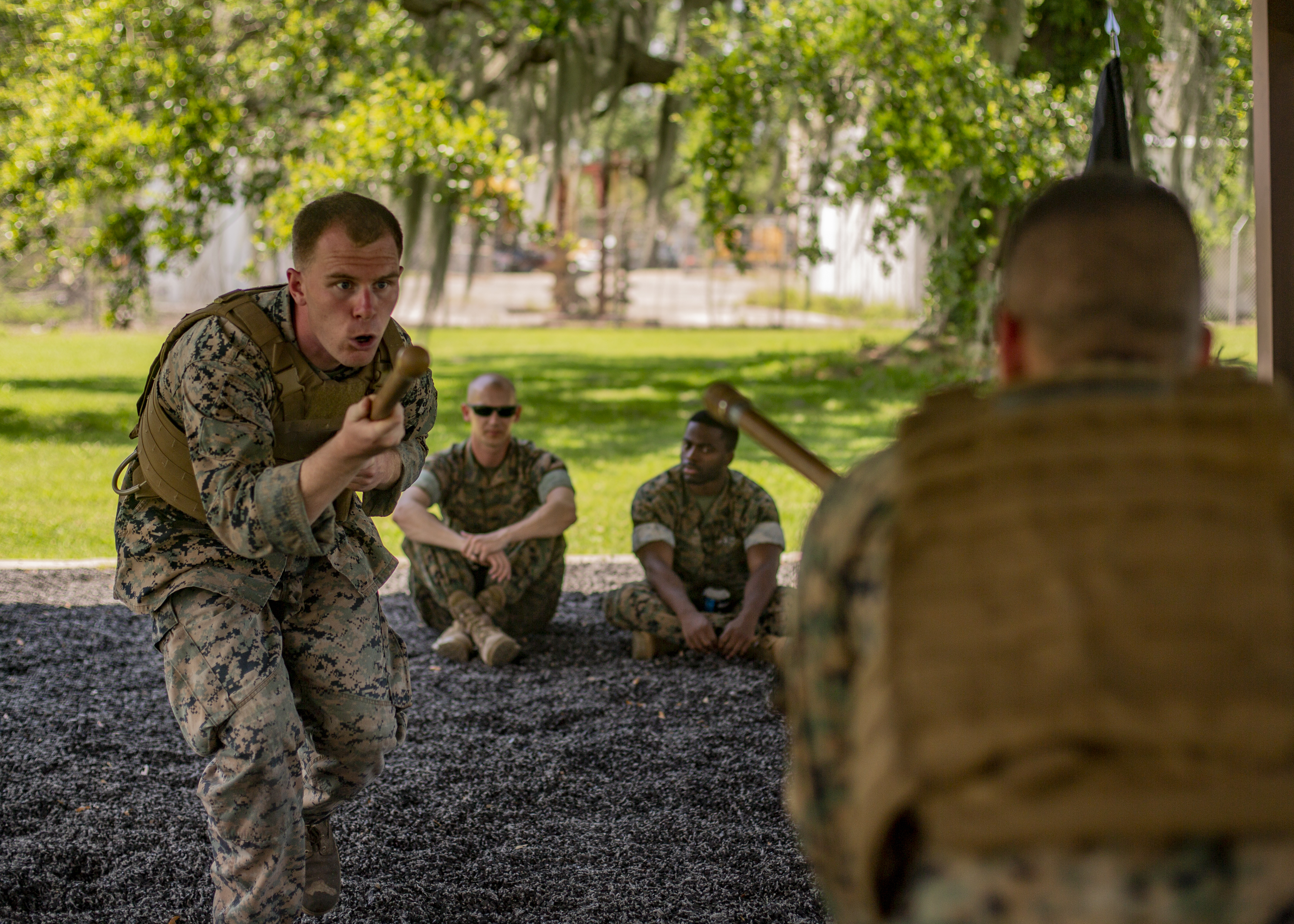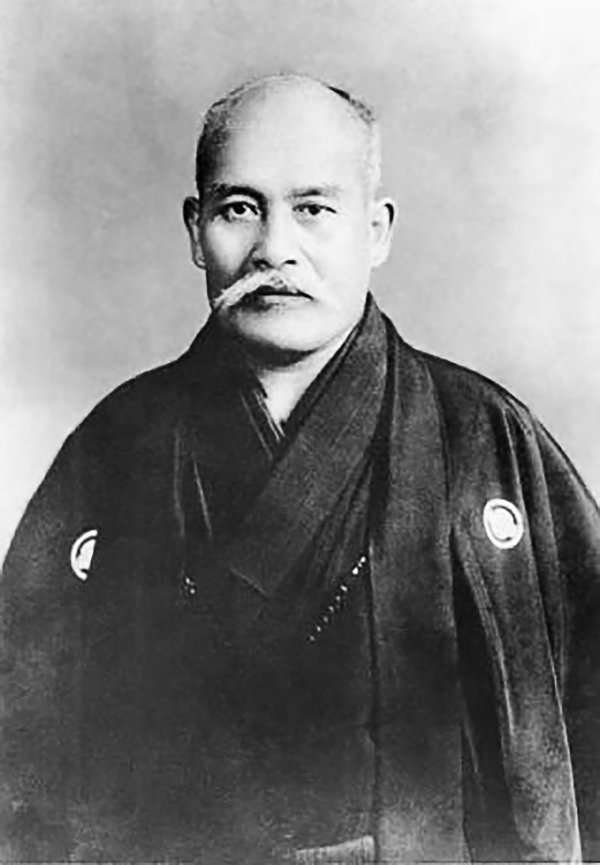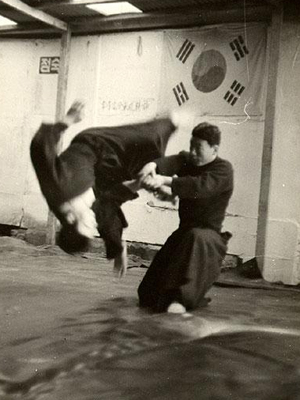|
Shoot Aikido
Aikidō S. A. (合気道S.A.) also known as Shoot Aikido (シュート・アイキドウ, Shūto aikidou) is a Japanese martial art. It was founded by Fumio Sakurai (currently Aikido S.A. representative instructor), who was ranked 6th in the Yoshinkan Aikido, trained under the style's founder, Gozo Shioda, for 20 years as an uchideshi of Shioda. The purpose of Aikido S.A. is development and research of Aikido, to deepen the practice of the art and enhance its practicality in modern self-defense scenarios. Aikido S.A collaborates with other Aikido organizations of Japan. Features of Aikido S.A. * Based on Yoshinkan Aikido, striking techniques and kumite / match formats are added. There are 1) actual battle / real aikido rule tournaments, 2) traditional integrated aikido rule tournaments, 3) rookie battle tournaments, and a mix of 1) and 2) where practitioners of from other martial arts schools can also enter. It is characterized by accepting a wide range of athletes and martial ar ... [...More Info...] [...Related Items...] OR: [Wikipedia] [Google] [Baidu] |
Martial Art
Martial arts are codified systems and traditions of combat practiced for a number of reasons such as self-defence; military and law enforcement applications; competition; physical, mental, and spiritual development; entertainment; and the preservation of a nation's intangible cultural heritage. The concept of martial arts was originally associated with East Asian tradition, but subsequently the term has been applied to practices that originated outside that region. Etymology "Martial arts" is a direct English translation of the Sino-Japanese word (, ). Literally, it refers to "武 martial" and "芸 arts". The term ''martial arts'' was popularized by mainstream popular culture during the 1960s to 1970s, notably by Hong Kong martial arts films (most famously those of Bruce Lee) during the so-called " chopsocky" wave of the early 1970s. According to John Clements, the term ''martial arts'' itself is derived from an older Latin term meaning "arts of Mars", the Roman god of w ... [...More Info...] [...Related Items...] OR: [Wikipedia] [Google] [Baidu] |
Yoshinkan Aikido
Yoshinkan (養神館 ''Yōshinkan'' lit. "Hall of Spirit Cultivation") Aikido is a style of aikido that developed after World War II in the Yoshinkan Dojo of Gozo Shioda (1915–1994). Yoshinkan Aikido is often called the "hard" style of aikido because the training methods are a product of Shioda's grueling life before the war. Shioda named his dojo "Yoshinkan" after a dojo of the same name that was built by his father, a physician, who wanted to improve both physical and spiritual health. The Yoshinkan style is currently the second largest aikido organization worldwide. Style As a style of aikido, Yoshinkan is more akin to the pre-World War II, war ''aikibudo'' techniques taught by Morihei Ueshiba, and therefore also generally closer to aikijujutsu than those styles of aikido developed after the war. The unusual emphasis placed on correct form prior to practicing correct flow and timing further contributes to its image as a "hard" style. Gozo Shioda created a structured method ... [...More Info...] [...Related Items...] OR: [Wikipedia] [Google] [Baidu] |
Gozo Shioda
was a Japanese master of aikido who founded the Yoshinkan style of aikido.Aikido Yoshinkan: About Gozo Shioda (Yoshinkan Founder) (c. 2009). Retrieved on February 27, 2010. Anonymous (1964): "Yoshinkai Aikido Institute." ''Black Belt'', 2(4):52–55. He was one of aikido founder 's most senior students.Adams, A. (1974): "Status report: The 'other' Aikido." ''Black Belt'', 12(2):34–37.Zernow, D., & Hadden, J. (1982): "Aikido Yoshinkai: Power and harmony." ''Black Belt'', 20(11):56–60, 84–87.Makiy ... [...More Info...] [...Related Items...] OR: [Wikipedia] [Google] [Baidu] |
Shootwrestling
Shoot wrestling is a Japanese hybrid grappling style and combat sport. Shoot wrestling incorporates techniques from various wrestling, submission grappling, kickboxing and karate styles. It was particularly inspired and influenced by catch wrestling, a form of wrestling with submissions that was the predominant style of professional wrestling in the 19th and early 20th century, at the time a competitive sport and not yet predetermined. Shoot wrestling originated in Japan's professional wrestling circuit (''puroresu'') of the 1970s, particularly stemming from the influence of wrestlers Karl Gotch, Lou Thesz and Billy Robinson, all who had an enduring popularity in Japan due to their serious submission wrestling style. Professional wrestlers of that era attempted to use more realistic or even "full contact" moves in their matches to increase their excitement, diminishing or eschewing the theatrical elements and acrobatics, looking more similar to an actual, unscripted fight. The nam ... [...More Info...] [...Related Items...] OR: [Wikipedia] [Google] [Baidu] |
Tantojutsu
Tantōjutsu (短刀術) is a Japanese term for a variety of traditional Japanese knife fighting systems that used the tantō (短刀), as a knife or dagger. Historically, many women used a version of the tantō, called the kaiken, for self-defense, but onna-musha, warrior women in pre-modern Japan learned one of the tantōjutsu arts to fight in battle. Martial arts that practise tantōjutsu Tantō with blunt wooden or plastic blades are used to practice martial arts. Metal blades can be used in more advanced training and in demonstrations. Styles that use tantō: Budō (Gendai): * Aikido * Shorinji Kempo Bugei: * Yanagi-ryū Aiki Bugei (Yoshida-ha Shidare Yanagi-ryū) * Ogawa-ryu Bugei Bujutsu (Koryū): * Kashima Shin-ryū (this ''ryū (school), ryūha'' uses term Kaikenjutsu) * Takamura-ha Shindo Yoshin-ryu * Tendō-ryū See also * Kaiken (dagger) * Wakizashi References Japanese martial arts Japanese martial arts terminology Edged and bladed weapons {{Martialart-term ... [...More Info...] [...Related Items...] OR: [Wikipedia] [Google] [Baidu] |
Kenjutsu
is an umbrella term for all ('' ko-budō'') schools of Japanese swordsmanship, in particular those that predate the Meiji Restoration. Some modern styles of kendo and iaido that were established in the 20th century also included modern forms of kenjutsu in their curriculum. Kenjutsu, which originated with the samurai class of feudal Japan, means "methods, techniques, and the art of the Japanese sword". This is opposed to kendo, which means "the way of the sword" and uses a bamboo sword ( shinai) and protective armour ( bōgu). The exact activities and conventions undertaken when practicing ''kenjutsu'' vary from school to school, where the word school here refers to the practice, methods, ethics, and metaphysics of a given tradition, yet commonly include practice of battlefield techniques without an opponent and techniques whereby two practitioners perform ''kata'' (featuring full contact strikes to the body in some styles and no body contact strikes permitted in others). Co ... [...More Info...] [...Related Items...] OR: [Wikipedia] [Google] [Baidu] |
Aikido
Aikido ( , , , ) is a gendai budō, modern Japanese martial art which is split into many different styles including Iwama Ryu, Iwama Shin Shin Aiki Shuren Kai, Shodokan Aikido, Yoshinkan, Renshinkai, Aikikai, and Ki Aikido. Aikido is now practiced in around 140 countries. It was originally developed by Morihei Ueshiba, as a synthesis of his martial studies, philosophy and religious beliefs. Ueshiba's goal was to create an art which practitioners could use to defend themselves against attacks, while also protecting the attackers from injury. Aikido is often translated as "the way of unifying (with) Qi, life energy" or as "the way of harmonious spirit". According to the founder's philosophy, the primary goal in the practice of aikido is to overcome oneself instead of cultivating violence or aggressiveness. Morihei Ueshiba used the phrase to refer to this principle. Aikido's fundamental principles include: (entering), , (breathing control), (triangular principle), and (turn ... [...More Info...] [...Related Items...] OR: [Wikipedia] [Google] [Baidu] |
Hapkido
Hapkido ( , , ), also spelled ''hap ki do'' or ''hapki-do'' is a Korean martial art. It is a hybrid form of self-defense that employs joint locks, grappling, chokeholds, throwing techniques, kicks, punches, and other striking attacks. It also teaches the use of traditional weapons, including knife, sword, rope, nunchaku (ssang juhl bong), cane (ji pang ee), short stick (dan bong), and middle-length Stick fighting, staff (joong Bō, bong), Gun (staff), gun (analogous to the Japanese jō), and bō (Japanese), which vary in emphasis depending on the particular tradition examined. Hapkido employs both long-range and close-range fighting techniques, utilizing jumping kicks and percussive hand strikes at longer ranges, and pressure point strikes, joint locks, and Throw (grappling), throws at closer fighting distances. Hapkido emphasizes circular motion, redirection of force, and control of the opponent. Practitioners seek to gain advantage over their opponents through footw ... [...More Info...] [...Related Items...] OR: [Wikipedia] [Google] [Baidu] |
Yoshokai
The Aikido Yoshokai Association of North America (合氣道耀尚會; abbreviated as AYANA) is an American aikido organization founded in 1991 by former Yoshinkan-affiliated master Takashi Kushida. Its '' hombu '' is the Genyokan (玄耀館) in . Style Yoshokai Aikido is a "hard" style of aikido by common parlance, and very similar to |






